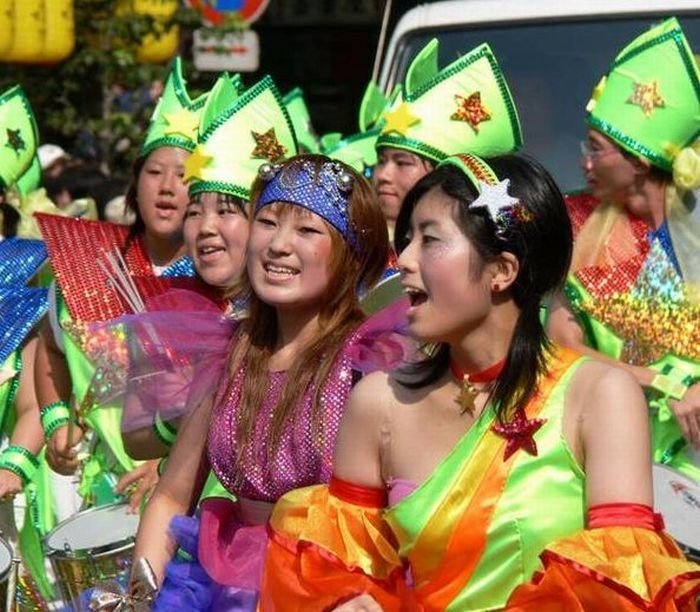Samba Carnival, Japan
|
The contours of the modern samba came only at the end of the 1920s, from the innovations of a group of composers of carnival blocks of neighborhoods of Estácio de Sá and Osvaldo Cruz, and the hills of Mangueira, Salgueiro and São Carlos. Since then, there were great names in samba, and some as Ismael Silva, Cartola, Ary Barroso, Noel Rosa, Ataulfo Alves, Wilson Batista, Geraldo Pereira, Zé Kéti, Candeia, Ciro Monteiro, Nelson Cavaquinho, Elton Medeiros, Paulinho da Viola, Martinho da Vila, and many others.
As the samba is consolidated as an urban and modern expression, he began to be played in radio stations, spreading the hills and neighborhoods to south area of Rio de Janeiro. Initially viewed with prejudice and criminalized by their black backgrounds, the samba to conquer the public middle class as well. Derived from samba, other musical earned themselves names such as samba-canção, partido alto, samba-enredo, samba de gafieira, samba de breque, bossa nova, samba-rock, pagode, and many others. In 2007, the IPHAN became the Samba a Cultural Heritage of Brazil.
The samba is the most popular musical genre in Brazil, well known associated abroad with the football and Carnival. This history began with the international success of "Aquarela do Brasil," by Ary Barroso, followed with Carmen Miranda (supported by Getúlio Vargas government and the US Good Neighbor policy), which led to the samba United States, went further by bossa nova, which finally entered the country in the world of music. The success of the samba in Europe and Japan only confirms its ability to win fans, regardless of language. Currently, there are hundreds of samba schools held on European soil (scattered by countries like Germany, Belgium, Netherlands, France, Sweden, Switzerland). Already in Japan, the records invest heavily in the launch of former Sambistas set of discs, which eventually create a market comprised solely of catalogs of Japanese record labels.
The modern samba that emerged from the beginning of the century rate is basically 2/4 tempo and varied, with conscious use of the possibilities of chorus sung to the sound of palms and batucada rhythm, and which would add one or more parts, or offices of declamatory verses. Traditionally, the samba is played by strings (cavaquinho and various types of guitar) and various percussion instruments such as tambourine. By influence of American orchestras in vogue since the Second World War and the cultural impact of US music post-war, began to be used also as instruments trombones and trumpets, and the influence choro, flute and clarinet.
|
|









